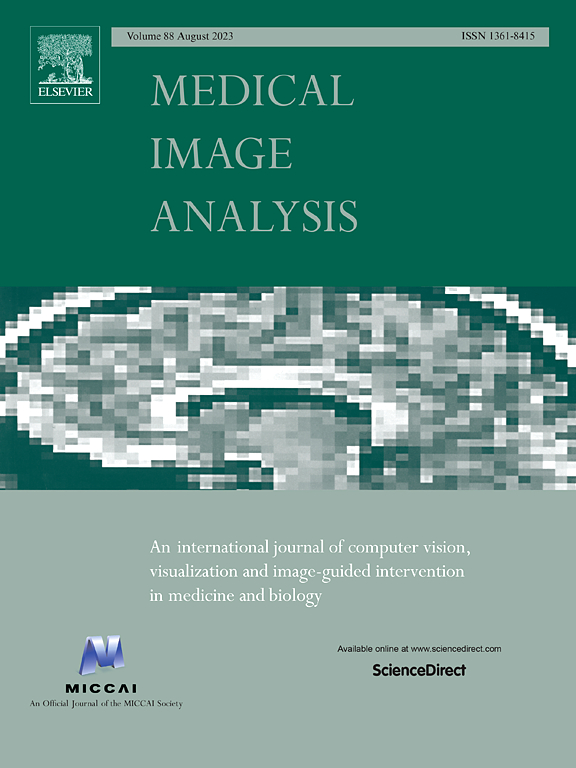DIPathMamba: A domain-incremental weakly supervised state space model for pathology image segmentation
IF 10.7
1区 医学
Q1 COMPUTER SCIENCE, ARTIFICIAL INTELLIGENCE
引用次数: 0
Abstract
Accurate segmentation of pathology images plays a crucial role in digital pathology workflow. However, two significant issues exist with the present pathology image segmentation methods: (i) Most fully supervised models rely on dense pixel-level annotations for superior results; (ii) Traditional static models are challenging to handle the massive amount of pathology data in multiple domains. To address these issues, we propose a Domain-Incremental Weakly Supervised State-space Model (DIPathMamba) that not only segments pathology images using image-level labels but also dynamically learns new domain knowledge and preserves the discriminability of previous domains. We first design a shared feature extractor based on the state space model, which employs an efficient hardware-aware design. Specifically, we extract pixel-level feature maps based on Multi-Instance Multi-Label Learning by treating pixels as instances, which are injected into our designed Contrastive Mamba Block (CMB). The CMB adopts a state space model and integrates the concept of contrastive learning to extract non-causal dual-granularity features in pathology images. Subsequently, to mitigate the performance degradation of prior domains during incremental learning, we design a Domain Parameter Constraint Model (DPCM). Finally, we propose a Collaborative Incremental Deep Supervision Loss (CIDSL), which aims to fully utilize the limited annotated information in weakly supervised methods and guide parameter learning during domain increment. Our approach integrates complex details and broader global contextual semantics in pathology images and can generate regionally more consistent segmentation results. Experiments on three public pathology image datasets show that the proposed method performs better than state-of-the-art methods.
求助全文
约1分钟内获得全文
求助全文
来源期刊

Medical image analysis
工程技术-工程:生物医学
CiteScore
22.10
自引率
6.40%
发文量
309
审稿时长
6.6 months
期刊介绍:
Medical Image Analysis serves as a platform for sharing new research findings in the realm of medical and biological image analysis, with a focus on applications of computer vision, virtual reality, and robotics to biomedical imaging challenges. The journal prioritizes the publication of high-quality, original papers contributing to the fundamental science of processing, analyzing, and utilizing medical and biological images. It welcomes approaches utilizing biomedical image datasets across all spatial scales, from molecular/cellular imaging to tissue/organ imaging.
 求助内容:
求助内容: 应助结果提醒方式:
应助结果提醒方式:


